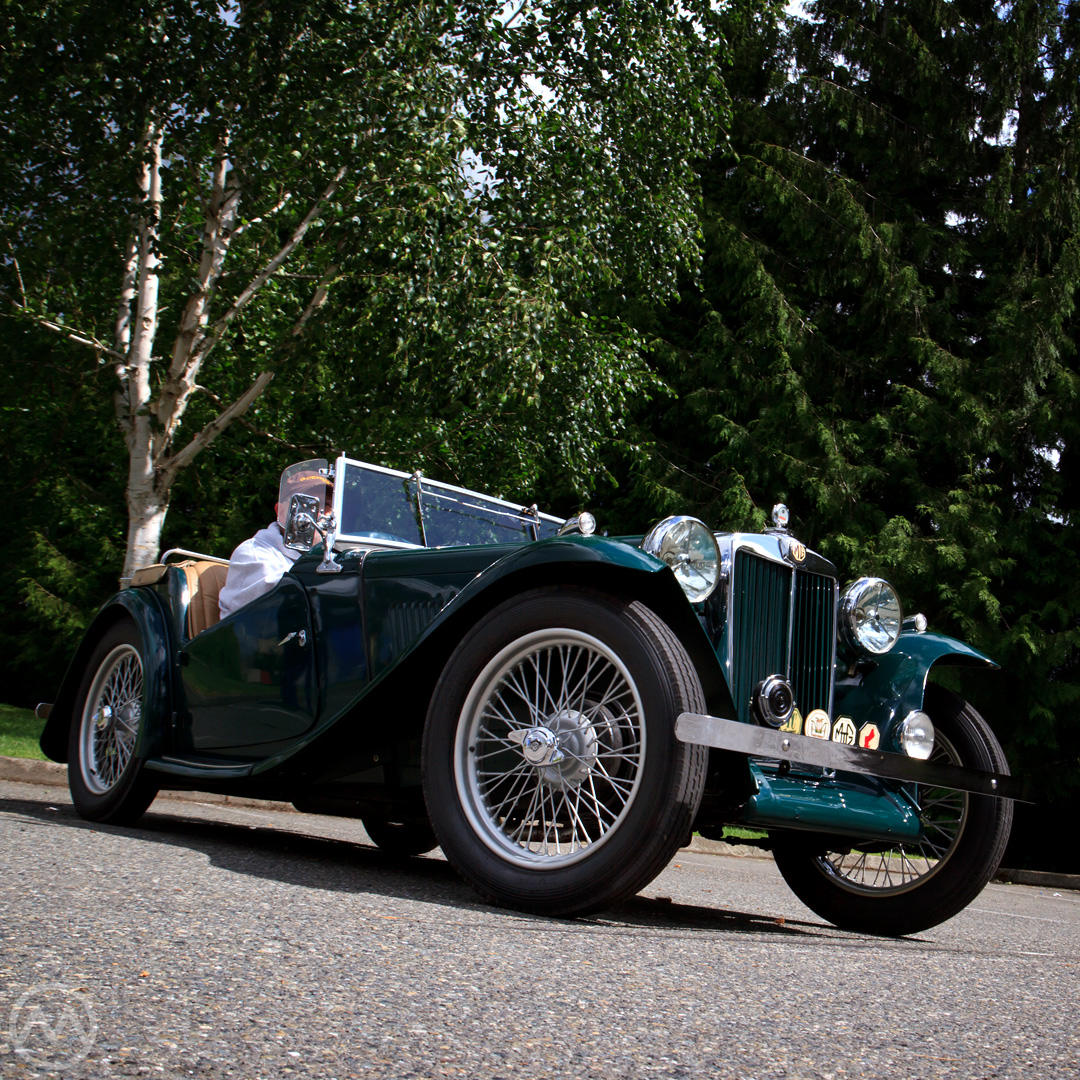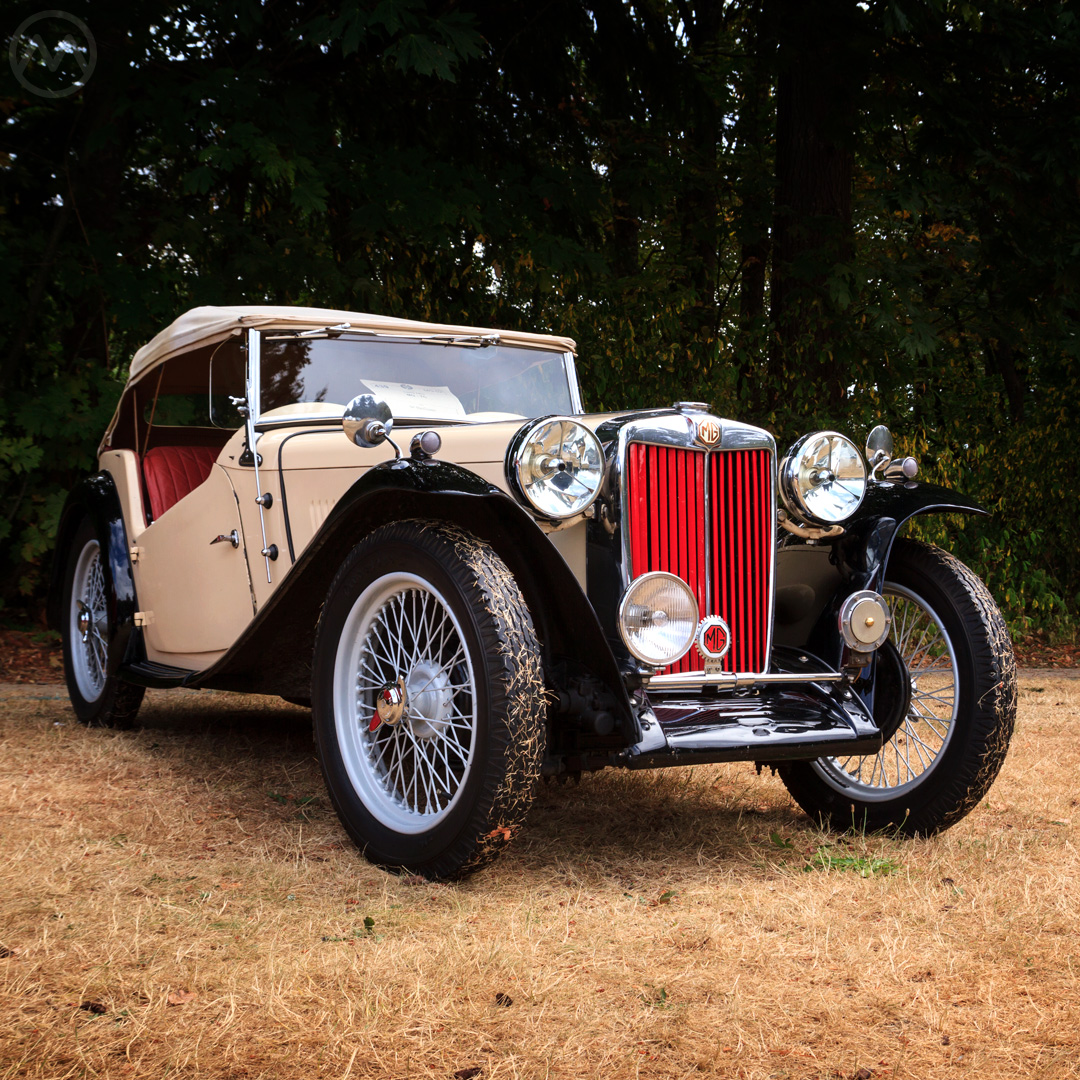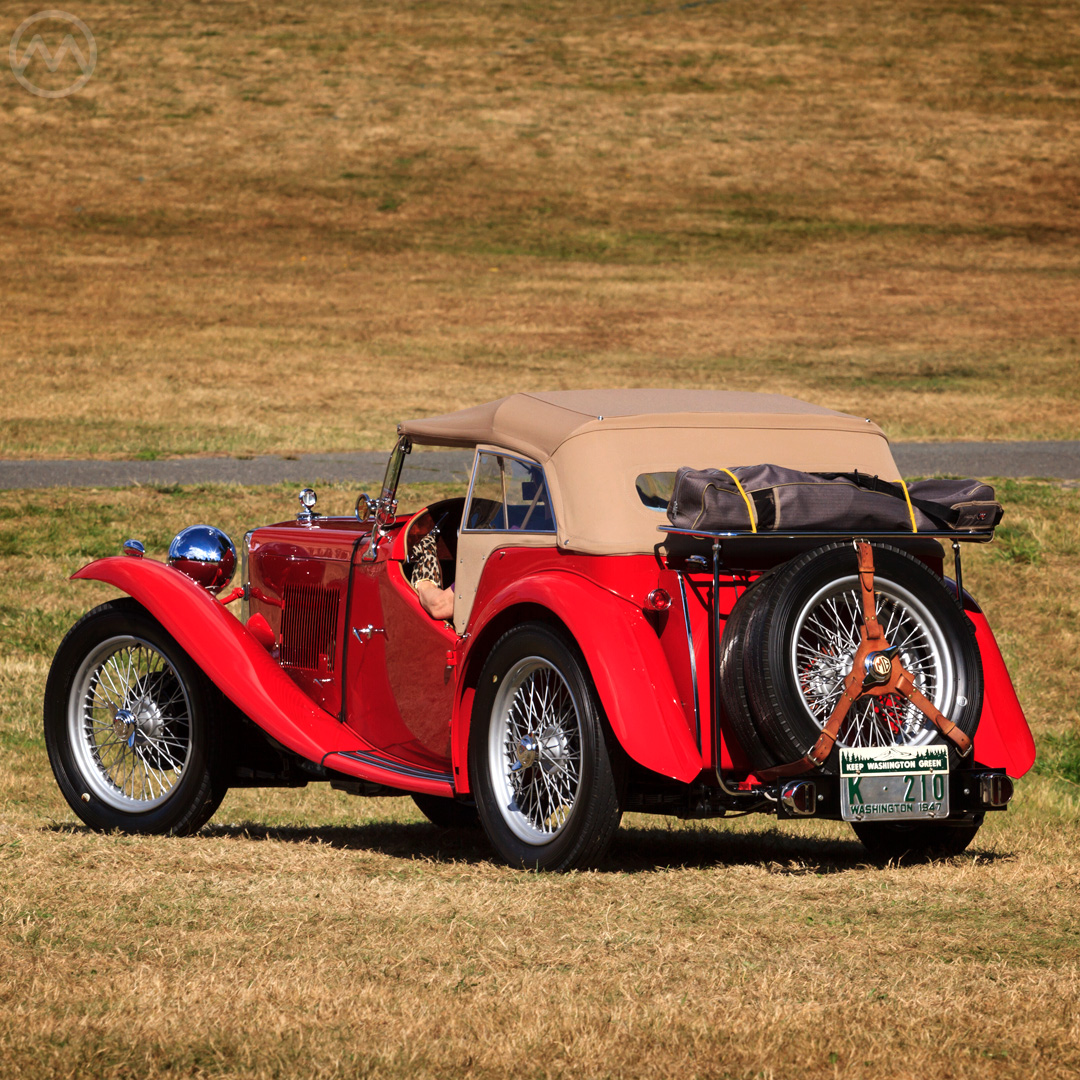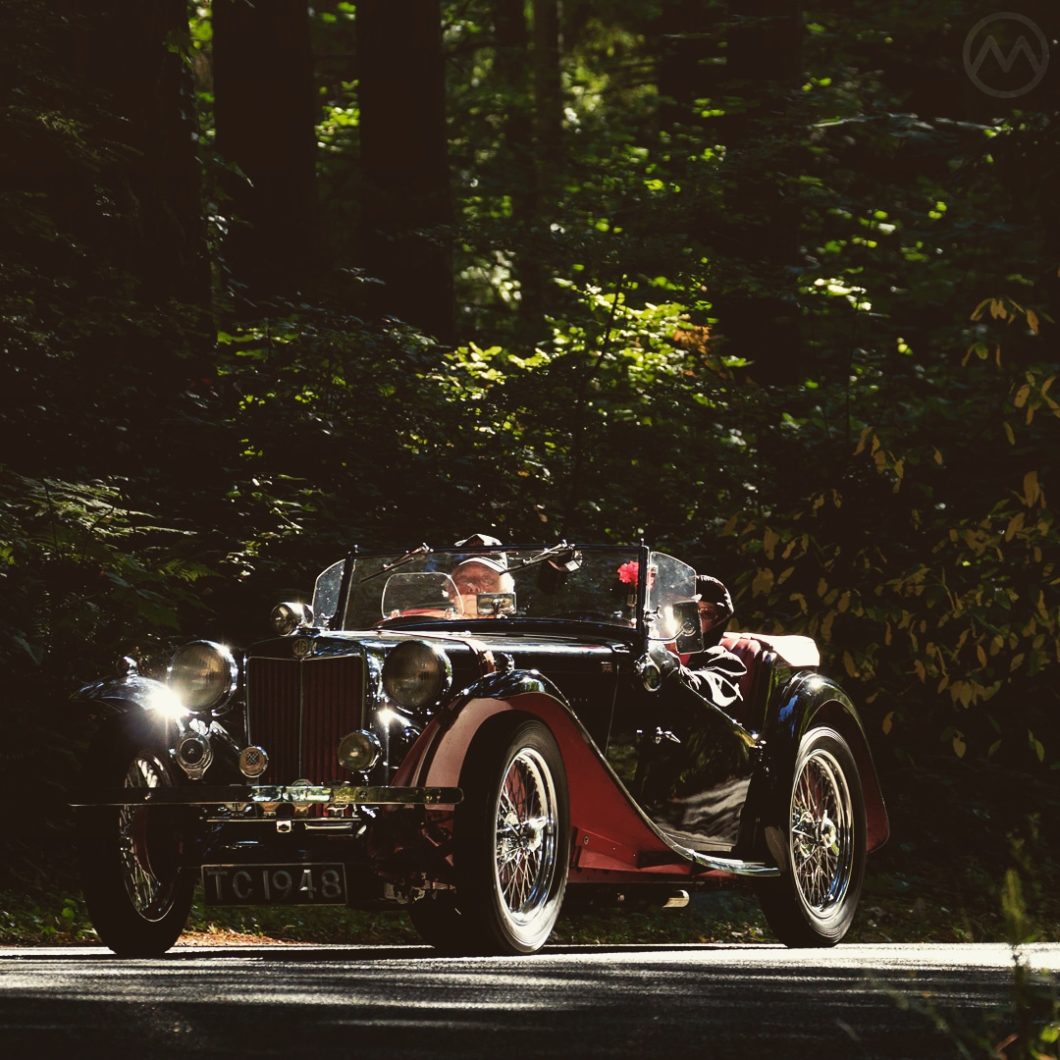It was 10 years old and looked archaic on paper, but the MG TC was the right car for its place and time in a way few cars have ever been. Just 10,001 were made and most of them stayed in the U.K., but the car had a seismic impact across the Atlantic.
Before the TC, American “sports cars” were of the Stutz DV-32 or Mercer Raceabout variety – big pricey exotics. They were essentially extinct by 1936 thanks to the depression. European cars were virtually unknown outside of major cities, and the few that did make it over were also mostly exotics.
The TC is a landmark British car and the textbook definition of “British Sports car,” but came from a tradition of continental “Voiturettes” and cyclecars that America had only briefly flirted with in 1919-20. It was cheap, fun, and totally unlike a typical 1940s American car. American G.I.s, exposed to such cars during the war, started shipping them home. It didn’t take long for the car to catch on.
MG Origins
The T-type Midget, the car’s family name, was introduced in 1936 as the TA. For all the feeling of sports car rawness that’s associated with the TC today, the original TA was considered “rather more civilized” than the earlier Midgets, which dated back to 1929’s M-type. It was part of a new group of MGs theoretically aimed more at mass acceptance than hard-core track work.
MG, of course, stood for “Morris Garages,” and was a sideline outgrowth of Morris cars. The “Morris Garage” was the company’s original site in Oxford on Longwall Street and by the 1920s was a dealership and service facility. It was here that Cecil Kimber began building special Morrises that evolved into “MG” between 1923 and 1925. We’d call them factory tuner cars today.
Kimber, formerly of Sheffield-Simplex and AC cars and hired in 1921, became the driving force behind this small, obscure branch of the ever-expanding Morris empire, but it wouldn’t remain obscure long. After 1925, demand for the cars dictated a series of new production spaces, culminating in the lease of the famous Abingdon factory in 1929.
Kimber loved sports cars and had been modifying his own cars since 1910, but the early MGs were largely mid-sized modified sedans and tourers. It wasn’t until 1928 that the first small MG sports car was created – the M-type Midget. The appellation “midget” denoted the car’s extremely tiny size – on a 78” (198cm) wheelbase, it would be considered a microcar today.
The M-type was based on the existing Morris Minor but used a light, cut-down roadster body mated to an 847-cc OHC four with the camshaft driven by gears, which shared much with the engine in the Minor and the Wosleley Ten. It made only 20hp, so straight-line speed was modest, but it looked and felt exciting and it handled well.
The M-type was directly inspired by racing-modified Austin 7s, but also the many racing voiturettes in France – Amilcar, BNC, Salmson. Though these builders went into decline in the late 1920s and early 1930s, their products would look very familiar to fans of 1930s and 1940s British sports cars.

The M-type created a car that looked and drove like those, but which was accessible and affordable to mainstream buyers. There was no other factory-built car quite like it at anything near the £185 price. It was a hit, and full series production began in the spring of 1929.
The M-type was a popular track day car in Britain but one of its biggest triumphs happened in France. Captain George Eyston and Earnest Eldridge used a modified, supercharged 750-cc M-type to set a speed record for the 750-cc class at Monthéry. Soon after, the factory was producing the supercharged C-type “Monthéry Midget.” Buyers were keenly aware that they could get a factory car not so dissimilar to a real racer.
The M was followed by C, D, J, P, Q, and R type midgets. These cars were almost totally unknown in the USA, but did have one important fan – Edsel Ford bought and imported an M-type Midget.
M to T
“Morris Garages” was personally owned by William Morris until the summer of 1935, when he sold it to his own Morris Motors in a reorganizing move to streamline the many businesses in his portfolio. Morris, by then Baron (and later Viscount) Nuffield, was not really a racing guy, and after this transition MG was tasked with focusing more on fast road cars than track-day warriors.
Leonard Lord, later a key figure in the evolution of what became British Motor Corporation, was appointed managing director of the newly formalized MG, and essentially sidelined Kimber. He was tasked with making MG more profitable and that meant different types of cars, and a cessation of official racing.
The most tangible result of the change was the big MG SA Two Litre, a huge sports sedan not unlike William Lyons’ original SS Jaguar Saloon. The SA was a nice car – gorgeous and fast – but a long gap between its public debut and full production meant Lyons’ car was much more successful. It was also totally unlike any previous MG, and wasn’t a big seller.
With the goal to share parts and make service easier, some of the advanced ideas in the early Midgets were abandoned for the next new MG – the T-type Midget.
Philosophically, the first T, the TA, was not so far removed from the P-type it replaced. It was larger and a little fancier, but still fundamentally a small sports car of similar size and scope. The wild Q- and R-type Midgets, described by Motor Sport at the time as “miniature GP cars” were dropped and never directly replaced.
Under the hood was a much larger engine – the 1,292 cc OHV four from the Wolseley ten but with a modified cam and twin carbs, now with 50 hp (up from the PB Midget’s 43-hp 939-cc OHC unit). The car was easier to service and had some modern additions – synchro on the top two gears and hydraulic brakes. Though perhaps not as wild as the OHC cars, the TA could do 75 mph and got good reviews.
The pretty shape of the T-type was later credited to Syd Enever, who like Cecil Kimber started at the Morris Garage. Enever was only part of the team that created the TA, which was largely evolved from the PB. The PB’s design team was led by Hubert Charles.
The TA was popular – MG’s most popular model since the M-type, but it was also meant to last longer. The earlier Midgets kept evolving in small ways and were rapidly replaced with new variations, but the TA was meant to have a long run over which the costs of the car could be spread out.

Kimber was able to push back and help privateers campaign the cars, so everyone was sort of happy with it. Kimber later left the company during the war after disagreements with Morris.
The TA was improved into the TB in 1939 with the undersquare Morris XPAG 1250-cc four, but then war came. Only 379 TBs were built before production ended, as opposed to more than 3,000 TAs.
The MG TC
In mid-1945, as hostilities ended, the TC was born. Unlike the TA and TB, it would be available only with a factory body – those earlier cars had optional coachbuilt versions. It was four inches wider in the cabin, with narrower running boards to match the increased width. But aside from some other minor changes, the TC was pretty much the TB, which looked just like the TA, which led some critics in Britain to call it outdated.
It was MG’s only product, as the big SA/VA/WA family did not return, and the only way MG could get a car back into production at all was to resurrect the TB. The Y-type sedans were still two years away.
It might have looked like 1936, but 1945’s audience did not care. The TC was instantly popular and eventually became the most popular MG up to that time. It was affordable, fun, and looked good, and in the climate of 1945-46, there simply weren’t any British cars with all new styling anyway.
The audience on which these cars made the biggest impression seemed to be young American airmen, the exact demographic that sports cars were most likely to appeal to later. No doubt many of them were exposed to modified Austin 7s, Wolseley Hornets, and pre-war MGs during the conflict and here was a factory sports car that they could buy new. It was not long before they started to trickle into the United States on an individual basis.
To Americans the TC was like a 4-wheeled motorcycle. The big spindly 19” wheels, time warp styling, and the feeling of being connected to the road were unique. Their light weight and direct feel made the cars undeniably fun.
They belied a rock hard ride that turned bouncy on broken pavement and lack of much practicality – the top and side curtains were a complex affair. Nobody cared. American cars, by contrast, had undergone two decades of converging on the smooth, quiet, solid idyll that 1920s mainstream customers had wanted. The MG was exciting if primitive.
It was tunable too – some were fitted with an easy-to-add Shorrocks supercharger for an experience probably not unlike the pre-1935 Midgets.
Within two years young racers like Phil Hill and Carroll Shelby were winning races in them and as many as nine importers were distributing them stateside. Supposedly 2,001 of the cars – 1/5th of TC production, were officially sold but more were privately imported. All were right-hand drive, an LHD MG would not emerge until the TD in 1950. Even that was not enough to hold back the popularity of the car, but its image and impact were larger than its sales numbers.

In 1947-48, the TC was still a rare sight on American roads, but Americans were certainly able to read about the exploits of Hill, Shelby, John Fitch, and others. Fitch was one of those returning servicemen, and became an early MG dealer.
The TC was a favorite of racers and journalists alike. Famed journo and later historian Denise McCluggage used one as a racer and a daily driver in the early 1950s.
Deep Impact
Within half a decade, America was the largest sports car market in the world, and MG’s largest market. It would remain the primary destination for MGs until the end of MGB production in 1980. American manufacturers were soon building their own sports cars – Nash-Healey, Corvette, Kaiser-Darrin. Some of these owed their existence as much to the TC as to the other major-league British Sports car hit of the forties – Jaguar’s much faster and larger XK120.
The War broadened the horizons of many Americans, particularly those who had served abroad, and once the sports car idea became a popular concept, it opened the door for consideration of other foreign cars.
British makes never had quite the same success with sedans and economy cars as they had with sports cars, but in the late 1940s and early 1950s the TC helped open the door for cars like the Morris Minor, Austin A40, Fiat 1100, Hillman Minx and even the Volkswagen. Within a decade, smaller imported cars had become a major market force in the USA. MG was one of the first to try exporting a sedan – the Y-type – in 1948 when “official” MG sales were beginning.
Soon, MG and the Nuffield organisation more broadly began to rationalize the American distribution network and were already beginning to plan for the next MG aimed at stateside customers. That car, the TD, on a new chassis with an independent front suspension (both derived from the Y-type) but retaining the look of the older Ts, arrived in 1950.

